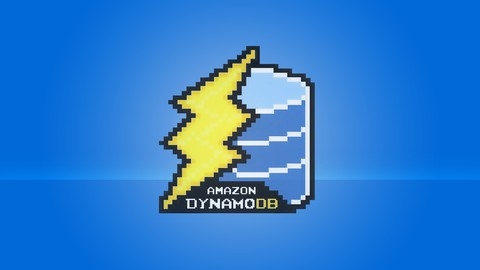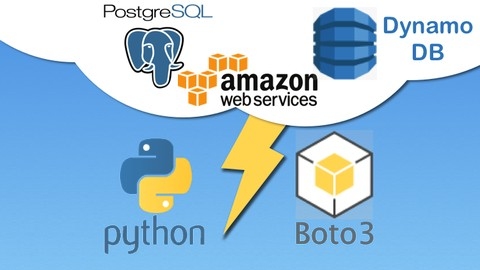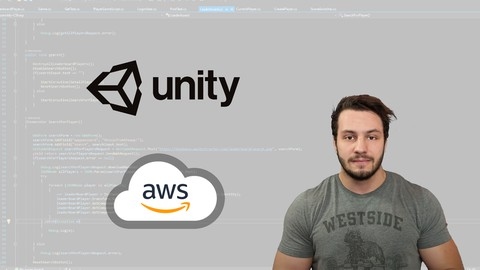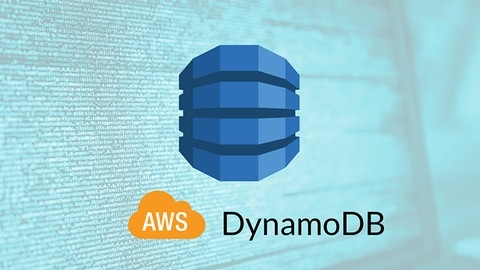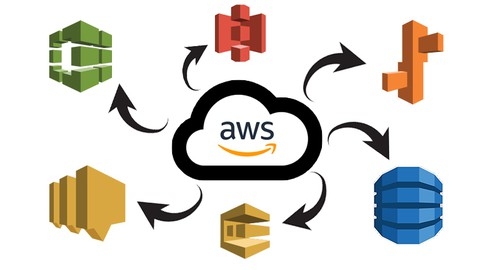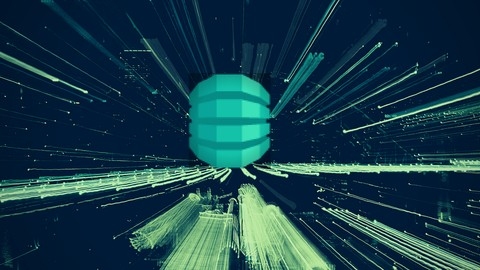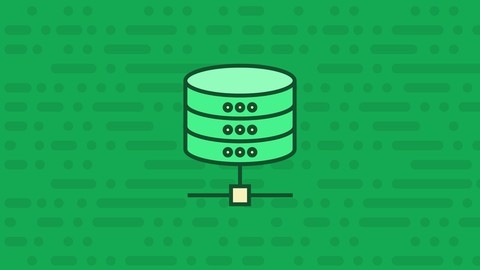DynamoDB is a fully managed, serverless NoSQL database service from Amazon Web Services.
It’s perfect for applications that need low latency, high throughput, and high availability, making it a popular choice for building modern applications.
By learning DynamoDB, you can gain valuable skills for developing scalable and reliable applications in the cloud.
Finding a good DynamoDB course on Udemy can feel like searching for a needle in a haystack.
There are so many options, each with its own strengths and weaknesses.
It can be tough to choose the right one that aligns with your learning style and goals, and will help you truly master DynamoDB.
We’ve reviewed a vast array of Udemy courses and, based on our analysis, the AWS DynamoDB - The Complete Guide (Build 18+ Hands On Demos) stands out as the best course overall.
This comprehensive course covers everything from the fundamentals of DynamoDB to advanced features and best practices.
With a heavy emphasis on practical experience, you’ll build over 18 real-world projects and demos that will solidify your understanding.
While this course is our top pick, Udemy offers a wide array of options to suit different learning styles and interests.
From beginner-friendly introductions to advanced courses focusing on specific DynamoDB features or integrations with other AWS services, you’re sure to find the perfect course for your needs.
Keep reading to discover our full list of recommendations and take your DynamoDB skills to the next level!
AWS DynamoDB - The Complete Guide (Build 18+ Hands On Demos)
You’ll start by learning the fundamentals of DynamoDB, including its data model, consistency model, capacity units, and partitions.
The course covers working with DynamoDB using the AWS Console, CLI, and SDK, allowing you to perform table and item-level operations.
You’ll dive into DynamoDB data modeling and best practices, exploring topics like efficient key design, handling hot keys, and implementing design patterns like multi-value sorts and filters.
The course also covers advanced DynamoDB features such as auto-scaling, DynamoDB Accelerator (DAX), streams, triggers with Lambda, Time to Live (TTL), and global tables.
Through hands-on demos and projects, you’ll gain practical experience with cross-region replication using global tables, auto-scaling, auto-archiving with TTL and Lambda, handling large items, caching with DAX, backup and restore, server-side encryption, logging API calls with CloudTrail, importing and exporting data using Data Pipeline, querying DynamoDB with Redshift and Apache Hive on EMR, full-text search with CloudSearch, monitoring with CloudWatch, and fine-grained access control with IAM.
The course includes a project where you’ll build a REST API to interact with DynamoDB, integrate a web app (SPA) with the DynamoDB backend, add Google authentication, set up federated access with Cognito, implement fine-grained access control, and deploy the web application and REST API to AWS Elastic Beanstalk.
Additionally, you’ll learn to integrate mobile apps (Android and iOS) with the DynamoDB backend, set up unified federated access with multiple Google clients using Cognito, and integrate authentication with the mobile apps.
RDS PostgreSQL and DynamoDB CRUD: AWS with Python and Boto3
You’ll start by setting up your development environment, installing necessary tools like Python, AWS CLI, and Boto3 on Windows or MacOS.
For the RDS part, you’ll learn to create a security group, DB subnet, and launch an RDS instance.
You’ll then connect to the instance using psycopg2 and perform CRUD operations like creating tables, inserting, reading, updating, and deleting data.
The DynamoDB section begins with setting up a local DynamoDB environment.
You’ll create tables, write data by putting and updating items conditionally or unconditionally.
For reading data, you’ll learn querying, scanning, and conditionally querying items.
The course uses PyCharm IDE for coding exercises.
Throughout the course, you’ll work with key AWS services like RDS, DynamoDB, security groups, and subnets.
You’ll gain hands-on experience with Python, Boto3 library, psycopg2 for PostgreSQL, and AWS CLI.
The course covers essential concepts like connecting to databases, handling credentials, and performing CRUD operations on both SQL and NoSQL databases using Python.
Amazon DynamoDB Data Modeling for Architects & Developers
You’ll start by setting up your local development environment, including DynamoDB, NoSQL Workbench, and an IDE.
From there, you’ll dive into the core concepts of DynamoDB, such as tables, capacity modes, item attributes, and data types.
You’ll learn how to perform CRUD operations using the various APIs, including PutItem, GetItem, UpdateItem, and DeleteItem.
The course also covers querying data with PartiQL, a SQL-compatible query language for DynamoDB.
One of the key focuses is data modeling with DynamoDB’s single-table design approach.
You’ll learn how to model entities, define primary keys, handle one-to-many and many-to-many relationships, and address issues like hot partitions.
The course includes hands-on exercises to reinforce these concepts, such as modeling a customer entity, embedding data with secondary indexes, and implementing the adjacency list pattern.
Advanced topics like ACID transactions, DynamoDB Streams, and Time to Live (TTL) are also covered.
You’ll learn how to use TransactWriteItems and TransactGetItems for atomic operations, set up stream readers for change data capture, and configure TTL for automatic data expiration.
The course includes a case study on modeling an ACME Bank application, where you’ll apply the concepts learned to design entities like customers, accounts, transactions, and offers.
You’ll also explore techniques like index overloading, parallel scans, and archiving transactions after a certain period.
Unity + NoSQL DynamoDB Player Management Leaderboards + More
You’ll start by learning the fundamentals of AWS and DynamoDB, setting up your first table, and understanding how to interact with it using Lambda functions.
From there, you’ll dive into Unity networking basics, enabling you to communicate with your Lambda functions from within your Unity application.
The course walks you through creating a user authentication system, including sign-up, login, and logout functionality.
You’ll learn how to securely store user credentials, implement password hashing, and handle error codes.
Once the authentication system is in place, you’ll build out various features for your game.
This includes creating a welcome scene, setting up a game scene with interactive buttons, and implementing an inventory system where players can store and manage their items.
You’ll also learn how to customize the player’s appearance, such as changing their ninja color, and persist these changes in the database.
The course covers setting up a leaderboard system, allowing players to view their rankings and compare their progress with others.
You’ll create a leaderboard scene, instantiate player prefabs at runtime, and build the necessary Lambda functions to retrieve and display leaderboard data.
Additionally, you’ll implement a guest feature, enabling users to play without creating an account and storing their progress locally using PlayerPrefs.
The course also teaches you how to set up a details panel to display comprehensive information about a player and implement a search function to find specific players.
Throughout the course, you’ll gain hands-on experience working with AWS services like DynamoDB and Lambda, as well as integrating them with a Unity application.
You’ll learn how to structure your data, write Lambda functions to handle various operations, and communicate with these functions from your Unity scripts using JSON data.
Amazon DynamoDB: Build out NoSQL Databases in the AWS Cloud
You will start by learning the basics of DynamoDB and how it fits into the AWS ecosystem, contrasting it with traditional SQL databases.
Next, you’ll dive deep into DynamoDB’s core features and operations.
The course covers essential topics like accessing DynamoDB, controlling costs through the pricing model, and managing access permissions with IAM.
Hands-on labs will guide you through creating and managing DynamoDB tables using both the AWS console and the command-line interface (CLI).
A key highlight is building a cloud-based note-taking app using DynamoDB and the Python SDK.
You’ll learn how to create tables, add data, and use expressions for conditional operations.
This practical project will solidify your understanding of DynamoDB’s real-world applications.
The course also includes a case study on Duolingo, showcasing how a popular app leverages DynamoDB’s capabilities.
You’ll gain insights into DynamoDB’s role in powering scalable, high-performance applications.
Throughout the course, you’ll work with essential AWS services like IAM for access management and the CLI for programmatic control.
AWS DynamoDB - Complete Guide (incl Schema Designing)
You’ll start by learning the fundamental differences between SQL and NoSQL databases, and why DynamoDB is designed for specific use cases.
The course will cover the core concepts of DynamoDB, such as Global Secondary Indexes (GSIs), accessing data through the CLI, web console, and NoSQL Workbench.
You’ll dive into schema design best practices, anti-patterns to avoid, and capacity modes like OnDemand and Provisioned.
The course explains DynamoDB’s availability, durability, consistency models, request units, and pricing structure, including examples and the free tier.
Hands-on projects form a significant part of the learning experience.
You’ll model an order processing app using the Workbench tool, exploring key schema design, access patterns, and code generation.
Another project involves building a social gaming app, where you’ll fetch games and players, handle open games by map, use transactional and conditional writes, and work with GSI access patterns.
The photo-sharing app project covers data modeling, key schema design, bulk loading items, fetching user photos and reactions using GSIs, partial normalization, and transactional writes for following users and adding reactions.
You’ll learn useful DynamoDB design patterns, sort key usage, and implementing proper pagination.
The course dives into leaderboard implementation using DynamoDB Streams, finding highest scores across games, write sharding for performance, and using CloudFormation templates.
Advanced topics like DynamoDB Accelerator (DAX), Time to Live (TTL), Global Tables, backups, restores, and Point-In-Time Recovery are also covered.
Security best practices are emphasized, including monitoring and controlling access, limiting network access via VPC Endpoints, and encryption options using KMS.
AWS DynamoDb, S3, SNS, SQS ,Beanstalk with Java
You will start by integrating Spring Boot with DynamoDB, creating a sample JSON database, and performing CRUD operations.
Next, you’ll dive into Elastic Beanstalk, setting up a server through the console and deploying your application.
The course also covers AWS CodePipeline and CodeBuild for integrating with Elastic Beanstalk.
Moving on, you’ll learn to work with SQS, creating queues, sending messages synchronously and asynchronously, and integrating JMS for consuming messages.
With S3, you’ll create buckets, insert objects, add tags, empty buckets, delete buckets, and even host static websites.
The course then focuses on SNS, where you’ll create topics through the console and code, publish messages, create subscriptions, and work with larger payloads.
Finally, you’ll integrate S3, SQS, and SNS together, learning to publish and consume larger payloads.
Throughout the course, you’ll gain hands-on experience with the AWS console, Java code, and Spring Boot applications, equipping you with practical skills to work with these AWS services effectively.
Hands-on AWS DynamoDB
You will start by learning the fundamentals of databases, including the differences between relational and non-relational databases.
The course then dives into DynamoDB, covering its core concepts, read consistency models, and data operations.
You will learn how to access DynamoDB, create tables, load data, and work with naming rules and data types.
The course covers primary keys, secondary indexes, and throughput capacity management.
It also guides you through scanning, querying tables, and performing CRUD (create, read, update, delete) operations.
To solidify your understanding, you’ll build a serverless web application using DynamoDB.
The course explores DynamoDB management tools, including streams for capturing data modification events, backup and restore functionality, and monitoring with metrics, alarms, and tags.
Security aspects like encryption at rest and web identity federation are also covered.
Throughout the course, you’ll complete quizzes to reinforce your learning.
The syllabus also includes a section on DynamoDB Accelerator (DAX), a fully managed in-memory cache that can improve performance for read-heavy workloads.
You’ll learn about DAX features and complete a lab comparing data retrieval from DynamoDB and DAX.
AWS Database- RDS, DynamoDB, Redshift, Neptune, Elasticache
The course starts with an introduction to AWS and guides you through creating an account and using the AWS CLI.
You’ll learn the fundamentals of databases and dive into AWS’s database offerings like RDS, DynamoDB, Redshift, Neptune, and Elasticache.
For DynamoDB specifically, you’ll learn how to create tables, write data to them, and read data from them.
There’s even a project where you’ll build a Lambda function that integrates with DynamoDB.
The course covers RDS in detail too, showing you how to create databases, restore from S3, use the Aurora engine, and monitor utilization.
You’ll get hands-on practice with the query editor for running database actions.
For Redshift, AWS’s data warehousing solution, you’ll learn the concepts and do a practical exercise.
The course also touches on Neptune, their graph database, and Elasticache for in-memory caching.
Throughout, you’ll use the AWS CLI and IAM for authentication, making this a comprehensive guide to AWS databases.
There are practice tests to reinforce what you’ve learned before the bonus lecture at the end.
Amazon DynamoDB for Beginners: The Complete Bootcamp
You’ll start by learning the fundamentals of NoSQL databases and how they differ from traditional SQL databases.
Even if you don’t have prior experience with SQL, the course will guide you through the necessary concepts.
You’ll quickly dive into hands-on activities, creating your first DynamoDB database and exploring its core features.
The course covers essential topics like DynamoDB tables, data types, capacity management, partitions, and indices.
You’ll learn how to perform write and read operations efficiently.
As you progress, you’ll delve into advanced DynamoDB concepts such as Time to Live (TTL) for data expiration, DynamoDB Accelerator (DAX) for caching, auto-scaling for dynamic capacity management, and using global tables for multi-region replication.
The course also covers server-side encryption, backups, recovery mechanisms, and point-in-time recovery.
You’ll discover how to integrate DynamoDB with other AWS services like Lambda functions for serverless computing, CloudWatch for monitoring, SNS for notifications, Redshift for data warehousing, and CloudSearch for full-text search capabilities.
The course also covers fine-grained access control using IAM policies.
Throughout the course, you’ll gain practical experience working with DynamoDB using the AWS CLI and SDKs.
The syllabus includes a bonus section that explores additional resources, such as AWS documentation and next steps for further learning.
You’ll learn how to leverage DynamoDB’s scalability, performance, and flexibility for your applications.
